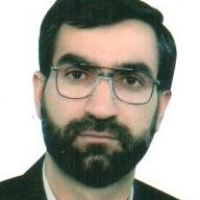Historical and descriptive semantics of the word "Talla" in the Holy Quran
Author(s):
Article Type:
Research/Original Article (دارای رتبه معتبر)
Abstract:
The present study is the historical and descriptive semantics of the word "talla," which is one of the hapax legomena of the Holy Quran. Recognition of words as the main constituent elements of sentence structure plays a vital role in understanding the speaker's meaning. Therefore, we have considered it necessary to study the evolution of words and their semantic relations and have undertaken this research. A brief introduction to semantics and its two historical-descriptive types, a brief reference to the "hapax legomenon" approach and its historical background, the study of this word in the context of history and its semantic implications, especially in the era of revelation, and its analysis within descriptive semantics based on "descriptive-analytical" research method is the primary purpose of this article. In the historical genre, by exploring the course of its semantic evolution, it became clear that in the pre-revelation period, in the Semitic languages, it meant "allaqa" and "rafa'a" and in the pre-Islamic era, the names "talla, talil, metall" meaning "hill, neck, and spear" implies the central meaning of ascension. In the age of revelation, it was concluded that the word "talla" with a semantic expansion approach, meaning "falling on the ground from a height" with a mixture of previous themes, has brought a comprehensive meaning. Through descriptive semantics, we have tried to explain the lexical depth of this word and its alternative and reciprocal propositions. Hence, the paradigmatic axis has a semantic relationship with the verbs "kharra, Hava, Kabba" and on the semantic opposition axis with the verbs rafa'a, Sa'eda, Raqa."
Keywords:
Language:
Persian
Published:
Journal of Arabic Language & Literature, Volume:14 Issue: 2, 2022
Pages:
1 to 21
https://magiran.com/p2553864
مقالات دیگری از این نویسنده (گان)
-
Pathology of Quran's Translators Functions in Translating of the Conjunctions According to Conjuction Cohesion (Case Study: Fouladvand, Khorramshahi and Makarem Shirazi)
Seyed Mahdi Hosseini *, Seyed Hossein Seyedi
Translation Researches in the Arabic Language And Literature, -
Analyzing the Components of Cohesion in Surah al-Naba' Based on Halliday's Textual Metafunction Model
Ahmad Teymori Bazgari, Seye Hossein Seydi *, Ahmadreza Heydarian Shahri
Journal of Stylistic Studies of the Holy Quran,




